Happy holidays in Japan & Taiwan
By Sarah Rossbach
Wherever I travel, I cherish that feeling of being transported in time and place to experience a historic site as the ancients did. When in Versailles, I imagine Marie Antoinette is frolicking as a milkmaid in her hameau. In London, I picture Sir John Soanes at his desk gazing at a roman plinth as he designs the Bank of England. In Kyoto garden, I envision the fictional Prince Genji courting Lady Murasaki with a clever cherry-blossom-inspired haiku. Which is why I am so utterly irritated by the busloads of selfie-stick-toting tourists who interrupt my carefully curated daydreams. My solution? Travel during Christmas
And not to Aspen, Park City, Gstaad, St. Moritz, Hawaii, the Caribbean or other traditional winter holiday destinations. This past December, we took our family vacation in Japan and Taiwan, two fascinating countries that can be completely booked-up during the height of their tourist seasons. Japan, for example, is impossible during its more temperate fall—with the brilliant colors for autumn leaf-watchers—and in spring, too, when it’s overrun with tourists elbowing their way between the plum and cherry tree blossoms. At many of the popular historic sites in Taiwan, visitors find themselves unable to secure tour reservations during the high seasons. These situations are unlikely to change. Right now, the US dollar enjoys a favorable exchange rate with both the Japanese yen and the new Taiwan dollar; taxis and mass transit are 50% less expensive than in the West, making both countries vastly more affordable than, say, England or France
Eschewing the yearly wrestling match with the Christmas tree, the added pounds from holiday parties and the challenge to find that perfect present for each and every member of the family, my husband and I boarded a flight with our son to Tokyo a week before Christmas. The planning for this trip began when our daughter, who is teaching English in Taiwan for a year, announced that she would not have the opportunity to return to New Jersey for the holidays
Flying halfway around the world isn’t an easy endeavor. Having done so on a number of occasions, there are some rules I try to follow. If you can save up your airline points, try to upgrade to an economy-plus or, even better, a business class seat. Also, try to arrive in the late afternoon so you can go to bed early and get on a local sleep schedule. Pre-purchase a Japan Rail Pass in the US so that, when you arrive at Narita Airport, you only have to pick up your tickets to the hour-long direct train ride to Tokyo. Before any train trip, we pre-booked our assigned seats at Tokyo Station.

All photos by Sarah Rossbach
TOKYO IN 36 HOURS
Our stay in Japan’s largest city was meant to be short, less than two days. We chose the Palace Hotel, located in the middle of the city (a convenient 10-minute walk from Tokyo Train Station) and overlooking the Emperor’s 1.3 square mile park-like estate. This neighborhood, known as Marunouchi, is Tokyo’s financial district, so it’s quieter and less busy during the weekend and in the evenings. As a result, it was easy to book a table for dinner near our hotel. In much of modern Tokyo, restaurants are not at street level; thanks to the guidance of our hotel’s concierge, we enjoyed amazing sushi on the 35th floor, steaming ramen on the 6th floor and $10 soba on the 7th floor of various local office/vertical shopping mall buildings. Of course, western restaurants exist. Yet the food loses something in translation. Case in point was brunch the next day at my favorite French bakery chain, Maison Kaiser. There were only three weird choices: beef mushroom soup, sliced beef or beef in a chef’s salad
Our time being short, we hired a guide for the afternoon to take us on a Tokyo version of speed-dating. Our guide, Mariko Okunishi, directed us through the city’s excellent (and clean!) subway system to the Meiji Shrine, Neju Museum and Garden, Harajuku Street—a young people’s area where women dressed like little western girls (which I really didn’t need to see)—Shibuya Crossing, the busiest crossroad in the world, and the Ginza aka Tokyo’s Fifth Avenue. The constraints of time and jet-lag prevented us from visiting the 7th century Asakusa Buddhist Temple and various museums devoted to bonsai, Japanese woodcuts and our son’s passion, Anime
The 95-year-old Meiji Shrine is dedicated to the Meiji Emperor and Empress and embodies the traditional Shinto worship of nature. It is a living monument, as locals celebrate weddings and children’s “coming of age” celebrations at 30 days, three, five and seven years. At the entrance to the park are troughs of water and ladles to clean and purify yourself (i.e. wash your hands). The shrine and its 170-acre park was the highlight of our day.
 AH, KYOTO
AH, KYOTO
Kyoto is a two-and-a-half-hour ride on a super-clean bullet train from Tokyo. We were smart and arrived early at the station to get the lay of the land; we had to query a handful of uniformed workers before locating our platform. We knew to request a seat on the right side of the train in order to catch a glimpse of Mt. Fuji. While Tokyo has been Japan’s capital since 1868, Kyoto was the seat of power in Japan for over 1,000 years and, as such, offers a stunning breadth and depth of historical and cultural sites. Whenever Kyoto is mentioned, the Japanese sigh and say, “Ah Kyoto”—no doubt invoked by romantic images of parasol-toting Geishas strolling by cherry blossoms in spring and vibrant red Japanese maple leaves in autumn
That being said, as we stepped off the train, I was struck by how much Kyoto, like Tokyo and New York, is a modern city. Japanese sensibility still can be found at Buddhist temples and Shinto shrines, as well as gardens, preserved palaces and museums. Kyoto boasts over 2,000 temples and shrines, ranging from ones designated as World Heritage Sites to mini sidewalk altars. To immerse ourselves further in Kyoto’s culture, we splurged a bit and stayed at a ryokan, a traditional Japanese inn, where guests sleep on futons in tatami rooms and dine on nine-course kaiseki meals for dinner and breakfast, presented by uber-polite kimono-clad servers. While the quality of these inns can vary, our stay at the Yoshikawa Inn was very comfortable, warm and dry on a cold and rainy day. It was a highlight of our five days in Japan.
 Though lighter in December, tourism at Kyoto’s top attractions is a year-round business. To beat the Chinese tourist buses, we rose early and visited the Kinkaku-ji Golden Temple (page 13), a very gold Buddhist temple. In concept, it dates back to 1398. But in fact it is a 1950s replica of the original, which was burned by a deranged monk. Another wonderful site is the Kiyomizu-dera Temple (left), founded in 778 and built in the 17th century with joinery (no nails) on a hillside overlooking Kyoto. While it is a Buddhist temple, Shinto shrines dot the grounds to “protect” the wooden temple from fire. Visitors often seek blessings and good fortune; they can drink from a spring-fed waterfall that is said to have wish-granting powers, leave petitions to the gods, or purchase good luck talismans. A former practice (fueled by the belief that anyone who survived a 13-foot jump from the temple veranda would have wishes fulfilled) wisely is prohibited now.
Though lighter in December, tourism at Kyoto’s top attractions is a year-round business. To beat the Chinese tourist buses, we rose early and visited the Kinkaku-ji Golden Temple (page 13), a very gold Buddhist temple. In concept, it dates back to 1398. But in fact it is a 1950s replica of the original, which was burned by a deranged monk. Another wonderful site is the Kiyomizu-dera Temple (left), founded in 778 and built in the 17th century with joinery (no nails) on a hillside overlooking Kyoto. While it is a Buddhist temple, Shinto shrines dot the grounds to “protect” the wooden temple from fire. Visitors often seek blessings and good fortune; they can drink from a spring-fed waterfall that is said to have wish-granting powers, leave petitions to the gods, or purchase good luck talismans. A former practice (fueled by the belief that anyone who survived a 13-foot jump from the temple veranda would have wishes fulfilled) wisely is prohibited now.
Surrounded by two moats, the Nijo Castle, the former Shogun’s home, is definitely worth a visit. The castle floors were built to squeak on purpose—as an early form of burglar alarm called “nightingales”—alerting the Shogun of assassins. The 400-year-old Nishiki market is also a fun typical Japanese destination. Its neat, colorful stalls selling everything from matcha to mocha (tea to rice cakes), sushi to sake, and pickles to dried fish. If you enjoy gardens, take a trolley to the Arashiyama area to visit Tenryu-ji, a Zen Temple with a tunnel-like bamboo grove leading to Okochi Villa, a beautiful garden designed by film star Denjiro Okochi. Across the river is a park full of wild but people-friendly monkeys.
Unfortunately, we did not make it to Nara, the capital city of the neighboring prefecture to Kyoto. It boasts some of the best examples of Tang Dynasty Chinese (yes, Chinese!) temple architecture. However, our next stop, Taiwan—a four-hour plane ride from Tokyo—would offer many outstanding examples of Chinese dynastic art and architecture.
 ON TO TAIWAN
ON TO TAIWAN
The island nation of Taiwan, home to 23 million people, was known for centuries to the west as Formosa, or beautiful island in Portuguese, a name bestowed upon it by 16th century sailors. In the ensuing years, Taiwan’s indigenous people were pushed to the margins by Han Chinese, who now make up more than 95 percent of the population. In 1949, Chiang Kai-shek fled to Taiwan after losing a civil war on mainland China to Mao’s Communist forces. The island has been known officially as the Republic of China ever since. While increasingly proud of its native Taiwanese culture, Taiwan offers fantastic Chinese food, temples and works of art—some would say the best in the world. Taipei, Taiwan’s capital, has emerged as one of the most vibrant cities in Asia. It is clean, relatively safe, has reliable and inexpensive transportation, great food and a vibrant nightlife. The Taiwanese demeanor strikes me as a pleasant, modern mixture of traditional Chinese and Japanese politeness. And because Taiwan is still perceived by much of the world as an electronics producing nation, it refreshingly isn’t on everyone’s tourist destination list. Yet
 We arrived in Taipei on Christmas and, happy to forego our traditional heavy Christmas dinner, we dined at James Kitchen, an informal and quirky Taiwanese restaurant a local friend had recommended. Our taxi dropped us off on winding Yongkang Street, which is lined with hip shops and restaurants, and we entered a narrow building cramped with diners. The owner led us past the kitchen, up rickety steps to a tatami room, with customers’ drawings covering every inch of the walls and ceilings so low I couldn’t stand up. Seated on cushions at our low table, we enjoyed mushroom dumplings, pork lard rice, sautéed vegetables and the fish that James Kitchen is known for. Our check was about $15 per person
We arrived in Taipei on Christmas and, happy to forego our traditional heavy Christmas dinner, we dined at James Kitchen, an informal and quirky Taiwanese restaurant a local friend had recommended. Our taxi dropped us off on winding Yongkang Street, which is lined with hip shops and restaurants, and we entered a narrow building cramped with diners. The owner led us past the kitchen, up rickety steps to a tatami room, with customers’ drawings covering every inch of the walls and ceilings so low I couldn’t stand up. Seated on cushions at our low table, we enjoyed mushroom dumplings, pork lard rice, sautéed vegetables and the fish that James Kitchen is known for. Our check was about $15 per person
Much of Taipei is very modern but, as we had in Japan, we sought out the traditional and cultural. One of our first stops was the Lungshan Temple (above). Originally built in 1738, the temple still serves as a local Buddhist center where people come to pray. Along the alley leading to the temple, we entered a simple vegetarian noodle stall, favored by monks, to enjoy soup noodles and dumplings for about $3 per person
If you are adventurous and don’t mind street food and street ambiance, you can get delicious, healthy food fast and cheap. For instance, at a stall near a university, bowls of perfectly prepared cold sesame noodles topped with shredded cucumber came to $1 per person. Even at the wonderful and popular Taiwanese dumpling chain Din Tai Fung, the check for beer and more than enough steamed soup buns and dumplings to fill five adults totaled $60. The bill for a yummy hotpot dinner of fresh vegetables and sliced beef was about $15 a head. Taiwan also has expensive and upscale restaurants. Some can be found in department stores and hotels, including our hotel, Le Meridian. So after enjoying wonderful inexpensive meals, I treated our family to Cantonese food at My Humble House. Its name is something of a deception, as nothing at the restaurant—from the food to the décor—is humble. Delicious, yes. Humble, no. The service was swift and professional and I am still dreaming of the shrimp dim sum and the barbecued pork, buttery moist pork with a crispy skin—sort of a yin-yang of textures. While you can splurge on expensive eight-course meals, our bill for an a la carte dinner at this top restaurant came to a reasonable $135 for four people.
To get a sense of Taiwanese culture, a friend who lives locally took us to Di Hua Street, the oldest street in Taipei, to view shops selling tea, ceramics, fabric and Chinese medicine. With a few structures dating back to the era of Dutch rule in the mid-1600s, much of the historic architecture has been restored without displacing local businesses. We spent the afternoon wandering through a traditional Taiwanese district with narrow streets, local shoppers and 19th century buildings still in the hands of the original families
If Taipei is your only stop in Taiwan, you still can enjoy scenery and hiking, be it in the city’s vast botanical garden, a steep climb up Elephant Mountain, or a trek up the more challenging Yang Ming Mountain. A bit further away (daytrip distance) is Taroko Gorge, with its hiking trails and rope bridges, Yilan’s hot springs, and beautiful Sun Moon Lake
 To my mind, the most compelling reason to visit Taipei is to view the world’s finest collection of Chinese art at the National Palace Museum just north of the city. How did these treasures land in Taiwan? When Chiang Kai-shek made his speedy exit from China, he and his KMT (Kuomingtang) troops had time to cart away crates of nearly 700,000 exceptional works of art formerly owned by millennia of emperors. Here the peerless imperial treasures—jades, Neolithic bronzes, porcelains, painting and calligraphy scrolls, jeweled mystery boxes—are exhibited with clear explanations in Chinese, Japanese and English. With exhibits rotating several times in a year, it would take over 30 years to display the entire collection. On our visit, we saw rare jade carvings, fine Song Dynasty celadon porcelains and stunning bird, animal and flower paintings by Giuseppe Castiglione—an 18th century Jesuit priest who began his stay in China as an Italian missionary. Castiglione became a trusted Imperial court painter who also created portraits of the Empress and Emperor during the height of the Qing Dynasty
To my mind, the most compelling reason to visit Taipei is to view the world’s finest collection of Chinese art at the National Palace Museum just north of the city. How did these treasures land in Taiwan? When Chiang Kai-shek made his speedy exit from China, he and his KMT (Kuomingtang) troops had time to cart away crates of nearly 700,000 exceptional works of art formerly owned by millennia of emperors. Here the peerless imperial treasures—jades, Neolithic bronzes, porcelains, painting and calligraphy scrolls, jeweled mystery boxes—are exhibited with clear explanations in Chinese, Japanese and English. With exhibits rotating several times in a year, it would take over 30 years to display the entire collection. On our visit, we saw rare jade carvings, fine Song Dynasty celadon porcelains and stunning bird, animal and flower paintings by Giuseppe Castiglione—an 18th century Jesuit priest who began his stay in China as an Italian missionary. Castiglione became a trusted Imperial court painter who also created portraits of the Empress and Emperor during the height of the Qing Dynasty
As a student studying Chinese in Taiwan, the National Palace Museum was my favorite destination and it was as quiet as a library. Today, busloads of Chinese and Korean visitors crowd exhibits. The locals typically wait until Friday and Saturday evenings, when the crowds disappear and they can visit the museum free
 The ancient Chinese have a proverb: “Walking 10,000 miles is better than reading 10,000 books.” When visiting any foreign country, we learn a great deal experiencing firsthand its scenery, sites, food and people. During our five-day stay in Taiwan, I noticed something that I had been blind to when I lived there as a student many decades ago. I was struck by how polite, kind and helpful local strangers were to us and to each other. Whether at Christmas or anytime of the year (except hot, humid typhoon months of July and August) visiting Taiwan is a lovely experience
The ancient Chinese have a proverb: “Walking 10,000 miles is better than reading 10,000 books.” When visiting any foreign country, we learn a great deal experiencing firsthand its scenery, sites, food and people. During our five-day stay in Taiwan, I noticed something that I had been blind to when I lived there as a student many decades ago. I was struck by how polite, kind and helpful local strangers were to us and to each other. Whether at Christmas or anytime of the year (except hot, humid typhoon months of July and August) visiting Taiwan is a lovely experience
 GEISHAS, GEISHAS EVERYWHERE
GEISHAS, GEISHAS EVERYWHERE
Alas, few of them are real…or even speak Japanese. Kyoto’s Geisha costume stores and rental shops do brisk business by the busload with young Chinese women, who mince along the winding temple paths or through the narrow streets of the historic Geisha districts. After weaving through scores of ersatz Geisha girls, we finally bumped into the “real deal,” along with her retinue, in the Gion district, best known as a filming location in the movie Memoirs of a Geisha.
 Schizophrenia Game-Changer?
Schizophrenia Game-Changer? 
 The Health Benefits of Equal Pay
The Health Benefits of Equal Pay 
 Screen Strain: It’s a Thing
Screen Strain: It’s a Thing  Small Wonder
Small Wonder 
 What You Don’t Know Can Hurt You
What You Don’t Know Can Hurt You  Gene-Editing Breakthrough
Gene-Editing Breakthrough  Mind & Body Connection
Mind & Body Connection 

 Martin, a Holocaust survivor, spent five years in a concentration camp in Poland. The Jewish faith is an indomitable trait of the Mintz family, and at a time of crisis they were able to find some solace in the hospital’s Bikur Cholim Room. Bikur Cholim is the Hebrew phrase for “visiting the sick,” and Martin’s family was impressed that Trinitas, a Catholic hospital, makes this accommodation available for Jewish families in need of support and a place to come together in prayer.
Martin, a Holocaust survivor, spent five years in a concentration camp in Poland. The Jewish faith is an indomitable trait of the Mintz family, and at a time of crisis they were able to find some solace in the hospital’s Bikur Cholim Room. Bikur Cholim is the Hebrew phrase for “visiting the sick,” and Martin’s family was impressed that Trinitas, a Catholic hospital, makes this accommodation available for Jewish families in need of support and a place to come together in prayer.
 NJ Sharing Network is a non-profit, federally designated organ procurement organization. It was formed three decades ago at about the same time the government passed legislation that required hospitals to present the option of donation to families of potential donors. Since then, organ donation has quadrupled in New Jersey, saving, extending or restoring countless thousands of lives. NJ Sharing Network coordinates the efforts of hospitals, transplant centers, medical examiners and funeral directors, as well as increasing public awareness through education and media outreach. The organization will be particularly busy this April, during National Donate Life Month. Schools, community groups, businesses, elected officials and, of course, hospitals around the country will be demonstrating their support of organ and tissue donation, and encouraging people to start talking about what they would do if a family member becomes a candidate for donation.
NJ Sharing Network is a non-profit, federally designated organ procurement organization. It was formed three decades ago at about the same time the government passed legislation that required hospitals to present the option of donation to families of potential donors. Since then, organ donation has quadrupled in New Jersey, saving, extending or restoring countless thousands of lives. NJ Sharing Network coordinates the efforts of hospitals, transplant centers, medical examiners and funeral directors, as well as increasing public awareness through education and media outreach. The organization will be particularly busy this April, during National Donate Life Month. Schools, community groups, businesses, elected officials and, of course, hospitals around the country will be demonstrating their support of organ and tissue donation, and encouraging people to start talking about what they would do if a family member becomes a candidate for donation. “In part because my mother had not made the decision to be an organ donor,” she explains. “We’d never had that conversation. The clock was running out and the siblings had to make a decision. That was my first encounter with NJ Sharing Network. A volunteer met with us and convinced us that this was something my mother would want to do.”
“In part because my mother had not made the decision to be an organ donor,” she explains. “We’d never had that conversation. The clock was running out and the siblings had to make a decision. That was my first encounter with NJ Sharing Network. A volunteer met with us and convinced us that this was something my mother would want to do.” 








 Gadget Inspector
Gadget Inspector And it doesn’t stop there. Showers are now programmable. The RainBrain by Hansgrohe ($4,750) (right) takes total shower jet control to a whole new level, creating the equivalent of a stand-up body massage. How about a laser razor? Skarp makes a slick, minimalistic shaver that emits a powerful light to cut off your facial bristles. Its recent launch on Indiegogo (a crowdfunder for startups), raised almost $500,000 and is targeted to be available this year at $289. FitBit devotees will enjoy the Aria scale, which can be synched to a smartphone to record not only poundage, but also body fat percentage, body mass index (BMI), heart rate, and even let you know about the day’s weather forecast
And it doesn’t stop there. Showers are now programmable. The RainBrain by Hansgrohe ($4,750) (right) takes total shower jet control to a whole new level, creating the equivalent of a stand-up body massage. How about a laser razor? Skarp makes a slick, minimalistic shaver that emits a powerful light to cut off your facial bristles. Its recent launch on Indiegogo (a crowdfunder for startups), raised almost $500,000 and is targeted to be available this year at $289. FitBit devotees will enjoy the Aria scale, which can be synched to a smartphone to record not only poundage, but also body fat percentage, body mass index (BMI), heart rate, and even let you know about the day’s weather forecast n addition to the various technological bells and whistles they offer, manufacturers are also looking at the safety component of bathroom design. One of Jay Leno’s tried-and-true jokes is about how more people die each year in bathroom falls than in plane crashes (the punch line is, “Yeah, but when you fall off the toilet you’re not falling 30,000 feet!”). Still, it’s no laughing matter. According to the Centers for Disease Control and Prevention, nearly a quarter-million people over age 15 visit the ER annually as a result of a bathroom injury; 14 percent require hospitalization. Two-thirds of bathroom injuries are sustained in or near a bathtub or shower. The injury rate for women is 72 percent higher than for men. And, interestingly, you’re more than four times likelier to get hurt getting out of a tub or shower than getting in. Even if you’re not springing for the big bathroom reno, its worth doing a quick safety assessment. Look for poorly fitting shower curtains, slick tile floors, soapy tub or shower beds, antiquated or improperly installed glass shower doors, area rugs without non-slip backing, and space heaters. These are items worth an immediate upgrade.
n addition to the various technological bells and whistles they offer, manufacturers are also looking at the safety component of bathroom design. One of Jay Leno’s tried-and-true jokes is about how more people die each year in bathroom falls than in plane crashes (the punch line is, “Yeah, but when you fall off the toilet you’re not falling 30,000 feet!”). Still, it’s no laughing matter. According to the Centers for Disease Control and Prevention, nearly a quarter-million people over age 15 visit the ER annually as a result of a bathroom injury; 14 percent require hospitalization. Two-thirds of bathroom injuries are sustained in or near a bathtub or shower. The injury rate for women is 72 percent higher than for men. And, interestingly, you’re more than four times likelier to get hurt getting out of a tub or shower than getting in. Even if you’re not springing for the big bathroom reno, its worth doing a quick safety assessment. Look for poorly fitting shower curtains, slick tile floors, soapy tub or shower beds, antiquated or improperly installed glass shower doors, area rugs without non-slip backing, and space heaters. These are items worth an immediate upgrade. A LITTLE BUDGET CONSCIOUS
A LITTLE BUDGET CONSCIOUS 



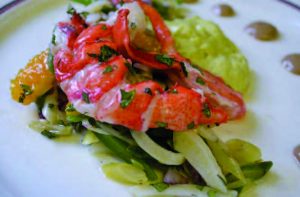



 Uncle Momo, a French-Lebanese bistro a few blocks away, has a bountiful brunch menu (as well as lunch and dinner). Owner and chef Wissam Elmasri, who is Lebanese and attended culinary school in France, serves a mix of American, French and Middle Eastern fare. The crepes, made from quinoa, are light and airy. The most unusual is Zeit W Zaatar, made with labne (yogurt cheese), cucumbers and olives, all seasoned with dried thyme. My two favorites—spinach & goat cheese and smoked salmon & spinach—are delicately flavored and topped with greens. Ruby red pomegranate seeds give the salad an unexpected zing.
Uncle Momo, a French-Lebanese bistro a few blocks away, has a bountiful brunch menu (as well as lunch and dinner). Owner and chef Wissam Elmasri, who is Lebanese and attended culinary school in France, serves a mix of American, French and Middle Eastern fare. The crepes, made from quinoa, are light and airy. The most unusual is Zeit W Zaatar, made with labne (yogurt cheese), cucumbers and olives, all seasoned with dried thyme. My two favorites—spinach & goat cheese and smoked salmon & spinach—are delicately flavored and topped with greens. Ruby red pomegranate seeds give the salad an unexpected zing. Ani Ramen, a trendy Japanese noodle house that opened in 2014, is a good place for lunch, snack or a casual dinner. Its success is not surprising, given that owner Luck Sarabhayavanija and his team tried hundreds of combinations of noodles and broth before settling on a menu. The result: A half-dozen ramens to showcase and about 20 more in the mix. “We have a simple chicken broth, a more complex miso, a brothless ramen with intense flavor, a wonderful vegetarian—our hidden gem—and our signature rich and creamy pork broth,” he says.
Ani Ramen, a trendy Japanese noodle house that opened in 2014, is a good place for lunch, snack or a casual dinner. Its success is not surprising, given that owner Luck Sarabhayavanija and his team tried hundreds of combinations of noodles and broth before settling on a menu. The result: A half-dozen ramens to showcase and about 20 more in the mix. “We have a simple chicken broth, a more complex miso, a brothless ramen with intense flavor, a wonderful vegetarian—our hidden gem—and our signature rich and creamy pork broth,” he says.  Mesob, where the food cries out for sharing. It arrives on a pizza-sized communal platter, to be eaten not with fork or spoon but with injera, the spongy flatbread that doubles as an eating implement in Ethiopia. Friendly waiters keep replenishing your supply as long as there’s food left to be scooped up. Order carefully here. My husband and I often ask for chicken and lamb tibs—marinated and sautéed with onions, garlic and jalapenos—prepared “between mild and medium,” but which is quite spicy. If you prefer food with little or no heat, select dishes marked “mild.” Each entrée comes with two sides. Misia wat (spicy lentils) and kik aletcha (yellow split peas) are among my favorites.
Mesob, where the food cries out for sharing. It arrives on a pizza-sized communal platter, to be eaten not with fork or spoon but with injera, the spongy flatbread that doubles as an eating implement in Ethiopia. Friendly waiters keep replenishing your supply as long as there’s food left to be scooped up. Order carefully here. My husband and I often ask for chicken and lamb tibs—marinated and sautéed with onions, garlic and jalapenos—prepared “between mild and medium,” but which is quite spicy. If you prefer food with little or no heat, select dishes marked “mild.” Each entrée comes with two sides. Misia wat (spicy lentils) and kik aletcha (yellow split peas) are among my favorites.  Costanera, a Peruvian restaurant whose owner/chef, Juan Placenia, was born in Lima but moved here when he was a tot, is two doors away. He graduated from the Culinary Institute of America, and everything I’ve eaten here—even the humble rotisserie chicken—has been top-notch. That
Costanera, a Peruvian restaurant whose owner/chef, Juan Placenia, was born in Lima but moved here when he was a tot, is two doors away. He graduated from the Culinary Institute of America, and everything I’ve eaten here—even the humble rotisserie chicken—has been top-notch. That  If you love Paris—and who doesn’t?—save room for dessert at Le Petit Parisien. Crepes, salads and sandwiches are also served here, but the macarons, pastries and croissants create the biggest buzz. Macarons come in many flavors and hues, including raspberry,
If you love Paris—and who doesn’t?—save room for dessert at Le Petit Parisien. Crepes, salads and sandwiches are also served here, but the macarons, pastries and croissants create the biggest buzz. Macarons come in many flavors and hues, including raspberry, 
 Paragon Tap & Table • Pan Seared Mahi Mahi
Paragon Tap & Table • Pan Seared Mahi Mahi 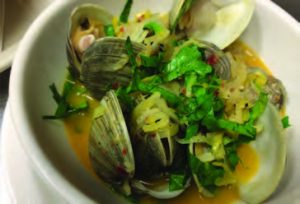 A Toute Heure/100 Steps Supper Club & Raw Bar
A Toute Heure/100 Steps Supper Club & Raw Bar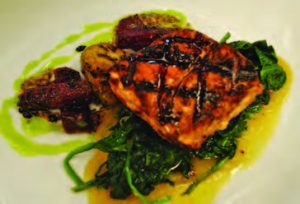 BoulevardFive72 • Grilled “Chermoula” Organic Salmon
BoulevardFive72 • Grilled “Chermoula” Organic Salmon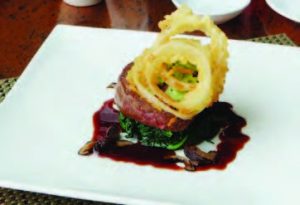 Arirang Hibachi Steakhouse • Wasabi Crusted Filet Mignon
Arirang Hibachi Steakhouse • Wasabi Crusted Filet Mignon  Daimatsu • Sushi Pizza
Daimatsu • Sushi Pizza Publick House • Kobe Short Rib
Publick House • Kobe Short Rib  Luciano’s Ristorante & Lounge • House Made Mafalda Pasta Inverno Style
Luciano’s Ristorante & Lounge • House Made Mafalda Pasta Inverno Style  Morris Tap & Grill • BBQ Braised Pork Shank with Corn Hash
Morris Tap & Grill • BBQ Braised Pork Shank with Corn Hash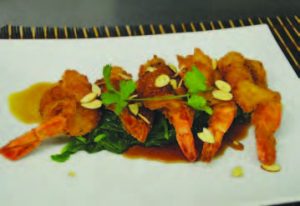 Thai Amarin • Goong Ma Kham
Thai Amarin • Goong Ma Kham  Spirit: Social Eatery and Bar • Jersey Breakfast Bar Pie
Spirit: Social Eatery and Bar • Jersey Breakfast Bar Pie Arirang Hibachi Steakhouse • Volcano Roll
Arirang Hibachi Steakhouse • Volcano Roll  The Manor • Petite Filet Mignon & Short Ribs
The Manor • Petite Filet Mignon & Short Ribs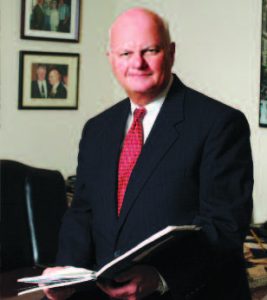 POWER PLAYER
POWER PLAYER  A NAME KNOWN ‘ROUND THE WORLD
A NAME KNOWN ‘ROUND THE WORLD  SHE’S NOTEWORTHY!
SHE’S NOTEWORTHY!  NEW NURSING LEADER
NEW NURSING LEADER 

 GARY HORAN INTERVIEWED ON NPR
GARY HORAN INTERVIEWED ON NPR  MILES OF SMILES
MILES OF SMILES  Raw Milk: Coming Soon to NJ?
Raw Milk: Coming Soon to NJ? 
 Almond Joy
Almond Joy 

 Connection Between Autism and Early Death
Connection Between Autism and Early Death 
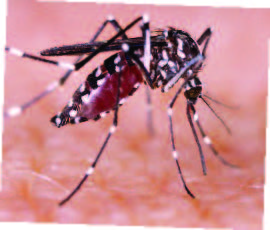

 Fish Warning For Mothers-To-Be
Fish Warning For Mothers-To-Be 
 Going Gray
Going Gray 

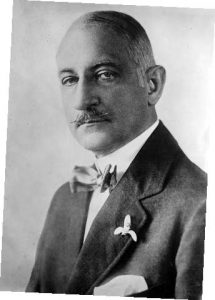
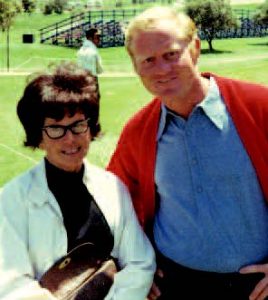

 SPORTING CLAYS TOURNAMENT AND MUCH MORE
SPORTING CLAYS TOURNAMENT AND MUCH MORE 






 Alyssa Campanella
Alyssa Campanella Stearns Matthews
Stearns Matthews Daria Berenato
Daria Berenato Margaret Gurevich
Margaret Gurevich If it’s been more than a year or two since you last jumped in the car and motored down to Asbury Park for a day (or summer weekend), you’re in for a pleasant surprise. After decades as a Jersey Shore ghost town, it has become a hip and happening summer destination in every conceivable sense of the word. The beach, the boardwalk and the city blocks radiating north and south from Cookman Avenue have been transformed. And the crowds are coming, from North Jersey by car and New York City by train, while sleek condos are going up as fast as buyers can sign on the dotted line. As a result, there is far more now to eat, buy, see and do in Asbury Park than anyone could conceivably handle in a day—dozens of places, both old and new. Which means a smart plan of attack is crucial. Build your day around a couple of these eateries and you won’t go wrong…
If it’s been more than a year or two since you last jumped in the car and motored down to Asbury Park for a day (or summer weekend), you’re in for a pleasant surprise. After decades as a Jersey Shore ghost town, it has become a hip and happening summer destination in every conceivable sense of the word. The beach, the boardwalk and the city blocks radiating north and south from Cookman Avenue have been transformed. And the crowds are coming, from North Jersey by car and New York City by train, while sleek condos are going up as fast as buyers can sign on the dotted line. As a result, there is far more now to eat, buy, see and do in Asbury Park than anyone could conceivably handle in a day—dozens of places, both old and new. Which means a smart plan of attack is crucial. Build your day around a couple of these eateries and you won’t go wrong…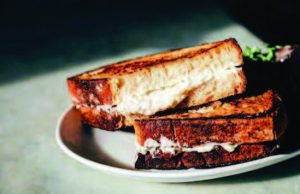 Pascale & Sabine, 601 Bangs Ave.
Pascale & Sabine, 601 Bangs Ave. Taka, 660 Cookman Ave.
Taka, 660 Cookman Ave. Moonstruck, 517 Lake Ave.
Moonstruck, 517 Lake Ave. Dino’s on Main, 300 Main St.
Dino’s on Main, 300 Main St. Langosta Lounge, 1000 Ocean Ave. at Second Ave.
Langosta Lounge, 1000 Ocean Ave. at Second Ave. Talula’s Pizza, 550 Cookman Ave.
Talula’s Pizza, 550 Cookman Ave. TOTALLY JUICED!
TOTALLY JUICED! B&G Home Interiors, 658 Cookman Ave.
B&G Home Interiors, 658 Cookman Ave.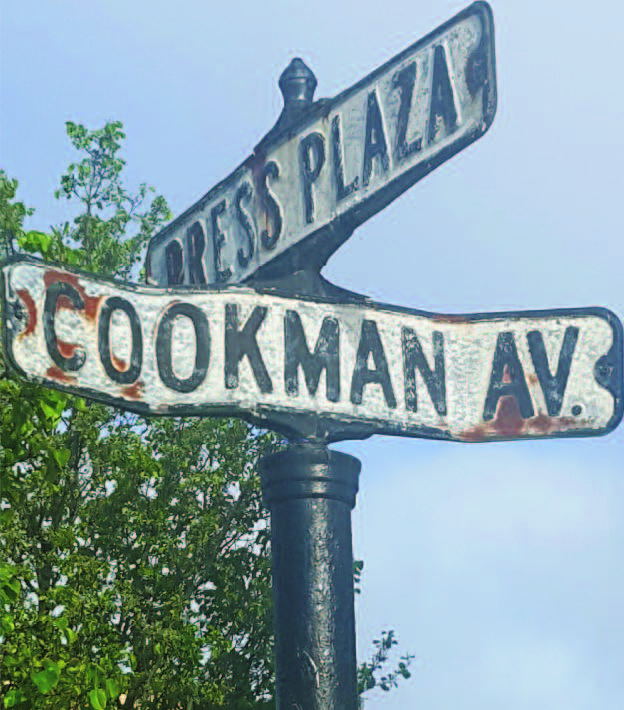

















 AH, KYOTO
AH, KYOTO Though lighter in December, tourism at Kyoto’s top attractions is a year-round business. To beat the Chinese tourist buses, we rose early and visited the Kinkaku-ji Golden Temple (page 13), a very gold Buddhist temple. In concept, it dates back to 1398. But in fact it is a 1950s replica of the original, which was burned by a deranged monk. Another wonderful site is the Kiyomizu-dera Temple (left), founded in 778 and built in the 17th century with joinery (no nails) on a hillside overlooking Kyoto. While it is a Buddhist temple, Shinto shrines dot the grounds to “protect” the wooden temple from fire. Visitors often seek blessings and good fortune; they can drink from a spring-fed waterfall that is said to have wish-granting powers, leave petitions to the gods, or purchase good luck talismans. A former practice (fueled by the belief that anyone who survived a 13-foot jump from the temple veranda would have wishes fulfilled) wisely is prohibited now.
Though lighter in December, tourism at Kyoto’s top attractions is a year-round business. To beat the Chinese tourist buses, we rose early and visited the Kinkaku-ji Golden Temple (page 13), a very gold Buddhist temple. In concept, it dates back to 1398. But in fact it is a 1950s replica of the original, which was burned by a deranged monk. Another wonderful site is the Kiyomizu-dera Temple (left), founded in 778 and built in the 17th century with joinery (no nails) on a hillside overlooking Kyoto. While it is a Buddhist temple, Shinto shrines dot the grounds to “protect” the wooden temple from fire. Visitors often seek blessings and good fortune; they can drink from a spring-fed waterfall that is said to have wish-granting powers, leave petitions to the gods, or purchase good luck talismans. A former practice (fueled by the belief that anyone who survived a 13-foot jump from the temple veranda would have wishes fulfilled) wisely is prohibited now. ON TO TAIWAN
ON TO TAIWAN We arrived in Taipei on Christmas and, happy to forego our traditional heavy Christmas dinner, we dined at James Kitchen, an informal and quirky Taiwanese restaurant a local friend had recommended. Our taxi dropped us off on winding Yongkang Street, which is lined with hip shops and restaurants, and we entered a narrow building cramped with diners. The owner led us past the kitchen, up rickety steps to a tatami room, with customers’ drawings covering every inch of the walls and ceilings so low I couldn’t stand up. Seated on cushions at our low table, we enjoyed mushroom dumplings, pork lard rice, sautéed vegetables and the fish that James Kitchen is known for. Our check was about $15 per person
We arrived in Taipei on Christmas and, happy to forego our traditional heavy Christmas dinner, we dined at James Kitchen, an informal and quirky Taiwanese restaurant a local friend had recommended. Our taxi dropped us off on winding Yongkang Street, which is lined with hip shops and restaurants, and we entered a narrow building cramped with diners. The owner led us past the kitchen, up rickety steps to a tatami room, with customers’ drawings covering every inch of the walls and ceilings so low I couldn’t stand up. Seated on cushions at our low table, we enjoyed mushroom dumplings, pork lard rice, sautéed vegetables and the fish that James Kitchen is known for. Our check was about $15 per person To my mind, the most compelling reason to visit Taipei is to view the world’s finest collection of Chinese art at the National Palace Museum just north of the city. How did these treasures land in Taiwan? When Chiang Kai-shek made his speedy exit from China, he and his KMT (Kuomingtang) troops had time to cart away crates of nearly 700,000 exceptional works of art formerly owned by millennia of emperors. Here the peerless imperial treasures—jades, Neolithic bronzes, porcelains, painting and calligraphy scrolls, jeweled mystery boxes—are exhibited with clear explanations in Chinese, Japanese and English. With exhibits rotating several times in a year, it would take over 30 years to display the entire collection. On our visit, we saw rare jade carvings, fine Song Dynasty celadon porcelains and stunning bird, animal and flower paintings by Giuseppe Castiglione—an 18th century Jesuit priest who began his stay in China as an Italian missionary. Castiglione became a trusted Imperial court painter who also created portraits of the Empress and Emperor during the height of the Qing Dynasty
To my mind, the most compelling reason to visit Taipei is to view the world’s finest collection of Chinese art at the National Palace Museum just north of the city. How did these treasures land in Taiwan? When Chiang Kai-shek made his speedy exit from China, he and his KMT (Kuomingtang) troops had time to cart away crates of nearly 700,000 exceptional works of art formerly owned by millennia of emperors. Here the peerless imperial treasures—jades, Neolithic bronzes, porcelains, painting and calligraphy scrolls, jeweled mystery boxes—are exhibited with clear explanations in Chinese, Japanese and English. With exhibits rotating several times in a year, it would take over 30 years to display the entire collection. On our visit, we saw rare jade carvings, fine Song Dynasty celadon porcelains and stunning bird, animal and flower paintings by Giuseppe Castiglione—an 18th century Jesuit priest who began his stay in China as an Italian missionary. Castiglione became a trusted Imperial court painter who also created portraits of the Empress and Emperor during the height of the Qing Dynasty The ancient Chinese have a proverb: “Walking 10,000 miles is better than reading 10,000 books.” When visiting any foreign country, we learn a great deal experiencing firsthand its scenery, sites, food and people. During our five-day stay in Taiwan, I noticed something that I had been blind to when I lived there as a student many decades ago. I was struck by how polite, kind and helpful local strangers were to us and to each other. Whether at Christmas or anytime of the year (except hot, humid typhoon months of July and August) visiting Taiwan is a lovely experience
The ancient Chinese have a proverb: “Walking 10,000 miles is better than reading 10,000 books.” When visiting any foreign country, we learn a great deal experiencing firsthand its scenery, sites, food and people. During our five-day stay in Taiwan, I noticed something that I had been blind to when I lived there as a student many decades ago. I was struck by how polite, kind and helpful local strangers were to us and to each other. Whether at Christmas or anytime of the year (except hot, humid typhoon months of July and August) visiting Taiwan is a lovely experience GEISHAS, GEISHAS EVERYWHERE
GEISHAS, GEISHAS EVERYWHERE 
 Paragon Tap & Table • Bacon Wrapped Pork
Paragon Tap & Table • Bacon Wrapped Pork  BoulevardFive72 • Seared Day Boat Scallop
BoulevardFive72 • Seared Day Boat Scallop Arirang Hibachi Steakhouse • Wasabi Crusted Filet Mignon
Arirang Hibachi Steakhouse • Wasabi Crusted Filet Mignon  Daimatsu • Crab Avocado Salad
Daimatsu • Crab Avocado Salad Publick House • Pan Roasted Salmon
Publick House • Pan Roasted Salmon  Luciano’s Ristorante & Lounge • Warm Goat Cheese Salad
Luciano’s Ristorante & Lounge • Warm Goat Cheese Salad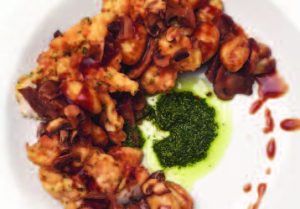 Morris Tap & Grill • Herb Chicken with fresh Gnocchi
Morris Tap & Grill • Herb Chicken with fresh Gnocchi Boulevard Seafood Company • Sautéed Black Sea Bass
Boulevard Seafood Company • Sautéed Black Sea Bass  Galloping Hill Caterers
Galloping Hill Caterers The Garden Restaurant • Top Sirloin Baseball Cut Steak
The Garden Restaurant • Top Sirloin Baseball Cut Steak The Pledge of Allegiance looked a little different back then. It read: I pledge allegiance to my Flag and the Republic for which it stands, one nation indivisible, with liberty and justice for all. Subsequent wording referencing the “United States of America” and “Under God” was added in the 1920s and 1950s, respectively. The original version was written in 1892 by Francis Bellamy (right) and published in The Youth’s Companion as part of a school program to celebrate the 400th anniversary of the arrival of Christopher Columbus in the Americas
The Pledge of Allegiance looked a little different back then. It read: I pledge allegiance to my Flag and the Republic for which it stands, one nation indivisible, with liberty and justice for all. Subsequent wording referencing the “United States of America” and “Under God” was added in the 1920s and 1950s, respectively. The original version was written in 1892 by Francis Bellamy (right) and published in The Youth’s Companion as part of a school program to celebrate the 400th anniversary of the arrival of Christopher Columbus in the Americas
 JERSEY BOY
JERSEY BOY An ardent patriot, he was among a group of patriotic Americans who hoped to rekindle America’s national spirit, which had been profoundly fractured since the Civil War. In 1889, McDowell founded the National Society of the Sons of the American Revolution, or SAR for short. Its aim was to recognize and celebrate American ideals and culture. The group enjoyed rapid acceptance and growth, counting among its early membership several wealthy and influential business and political leaders. In the summer of 1890, SAR officers decided to take
An ardent patriot, he was among a group of patriotic Americans who hoped to rekindle America’s national spirit, which had been profoundly fractured since the Civil War. In 1889, McDowell founded the National Society of the Sons of the American Revolution, or SAR for short. Its aim was to recognize and celebrate American ideals and culture. The group enjoyed rapid acceptance and growth, counting among its early membership several wealthy and influential business and political leaders. In the summer of 1890, SAR officers decided to take  Washington Post asked, “Where will the Sons and Daughters of the American Revolution place Hannah Arnett?” McDowell offered a response in the same newspaper, offering to help start the Daughters of the American Revolution.
Washington Post asked, “Where will the Sons and Daughters of the American Revolution place Hannah Arnett?” McDowell offered a response in the same newspaper, offering to help start the Daughters of the American Revolution. 


 Bellamy was an unlikely candidate for everlasting fame. He was a Baptist minister in Boston who had recently been relieved of his duties for pushing the Christian Socialist message too hard in his Sunday sermons. Fortunately for Francis, one of his congregants was Daniel Ford. Ford wasn’t a fan of the minister’s politics, but he admired the 36-year-old’s way with words and offered him a job at the Companion.Like McDowell, Ford had some influence in the White House. He encouraged President Harrison to okay a plan to make Columbus Day in 1892 a national school celebration…and to anoint The Youth’s Companion as the creator and distributor of the official program. Once Ford received the go-ahead, he assigned Bellamy to work with William Torrey Harris, head of the National Education Association. Harris was an admirer of the Prussian education system and believed the primary role of schools was to turn children into obedient citizens. Together, they hammered out a carefully orchestrated one-hour ceremony. At the urging of Upham, the program included the raising of a flag. Upham hoped that any school that did not yet have one would order a flag from his department. Taking this idea a step further, Ford and Upham also instructed Bellamy to pen a 15-second oath of loyalty for the children to recite. The program—including Bellamy’s Pledge of Allegiance—was published in the September 8,1892 edition of the magazine. On October 21, 1892, thousands of schools celebrated Columbus Day.
Bellamy was an unlikely candidate for everlasting fame. He was a Baptist minister in Boston who had recently been relieved of his duties for pushing the Christian Socialist message too hard in his Sunday sermons. Fortunately for Francis, one of his congregants was Daniel Ford. Ford wasn’t a fan of the minister’s politics, but he admired the 36-year-old’s way with words and offered him a job at the Companion.Like McDowell, Ford had some influence in the White House. He encouraged President Harrison to okay a plan to make Columbus Day in 1892 a national school celebration…and to anoint The Youth’s Companion as the creator and distributor of the official program. Once Ford received the go-ahead, he assigned Bellamy to work with William Torrey Harris, head of the National Education Association. Harris was an admirer of the Prussian education system and believed the primary role of schools was to turn children into obedient citizens. Together, they hammered out a carefully orchestrated one-hour ceremony. At the urging of Upham, the program included the raising of a flag. Upham hoped that any school that did not yet have one would order a flag from his department. Taking this idea a step further, Ford and Upham also instructed Bellamy to pen a 15-second oath of loyalty for the children to recite. The program—including Bellamy’s Pledge of Allegiance—was published in the September 8,1892 edition of the magazine. On October 21, 1892, thousands of schools celebrated Columbus Day.  Since every school now had a flag, most continued to have their students recite the Pledge of Allegiance every day. It became so popular that a movement started to make it a national oath for all Americans, not just kids. This concept attracted broad support, and not just because it might awaken the nation’s patriotic spirit. Ellis Island had opened a year earlier to accommodate the ever-growing influx of immigrants. Unlike, earlier waves, this one included a high percentage of people from Southern and Eastern Europe, many of them Jews or Catholics—religions that were misunderstood in the 1890s. Some questioned whether these new Americans would be loyal to the United States. An oath of allegiance thus held great appeal. President Harrison, who was preparing to run for reelection, thought a national oath was a superb idea.
Since every school now had a flag, most continued to have their students recite the Pledge of Allegiance every day. It became so popular that a movement started to make it a national oath for all Americans, not just kids. This concept attracted broad support, and not just because it might awaken the nation’s patriotic spirit. Ellis Island had opened a year earlier to accommodate the ever-growing influx of immigrants. Unlike, earlier waves, this one included a high percentage of people from Southern and Eastern Europe, many of them Jews or Catholics—religions that were misunderstood in the 1890s. Some questioned whether these new Americans would be loyal to the United States. An oath of allegiance thus held great appeal. President Harrison, who was preparing to run for reelection, thought a national oath was a superb idea.  More distractions followed, including a financial panic that spring. It was the worst in American history to that point, putting one in four Americans out of work. McDowell abandoned his Liberty Pole scheme and got back to business. Francis Bellamy continued to work at the Companion. And even though the Pledge of Allegiance would soon come to be regarded as America’s national oath of loyalty, no one could quite recall when and where its first recitation took place. As for the John Paul Jones flag, it was donated to the Smithsonian after the death of Mrs. Stafford. Curators there felt they did not have the necessary documentation to establish its authenticity. It was boxed up and never displayed in public. A few years later, the enormous Ft. McHenry flag made famous by the Star-Spangled Banner was donated to the Smithsonian, and the John Paul Jones flag was soon forgotten.
More distractions followed, including a financial panic that spring. It was the worst in American history to that point, putting one in four Americans out of work. McDowell abandoned his Liberty Pole scheme and got back to business. Francis Bellamy continued to work at the Companion. And even though the Pledge of Allegiance would soon come to be regarded as America’s national oath of loyalty, no one could quite recall when and where its first recitation took place. As for the John Paul Jones flag, it was donated to the Smithsonian after the death of Mrs. Stafford. Curators there felt they did not have the necessary documentation to establish its authenticity. It was boxed up and never displayed in public. A few years later, the enormous Ft. McHenry flag made famous by the Star-Spangled Banner was donated to the Smithsonian, and the John Paul Jones flag was soon forgotten.